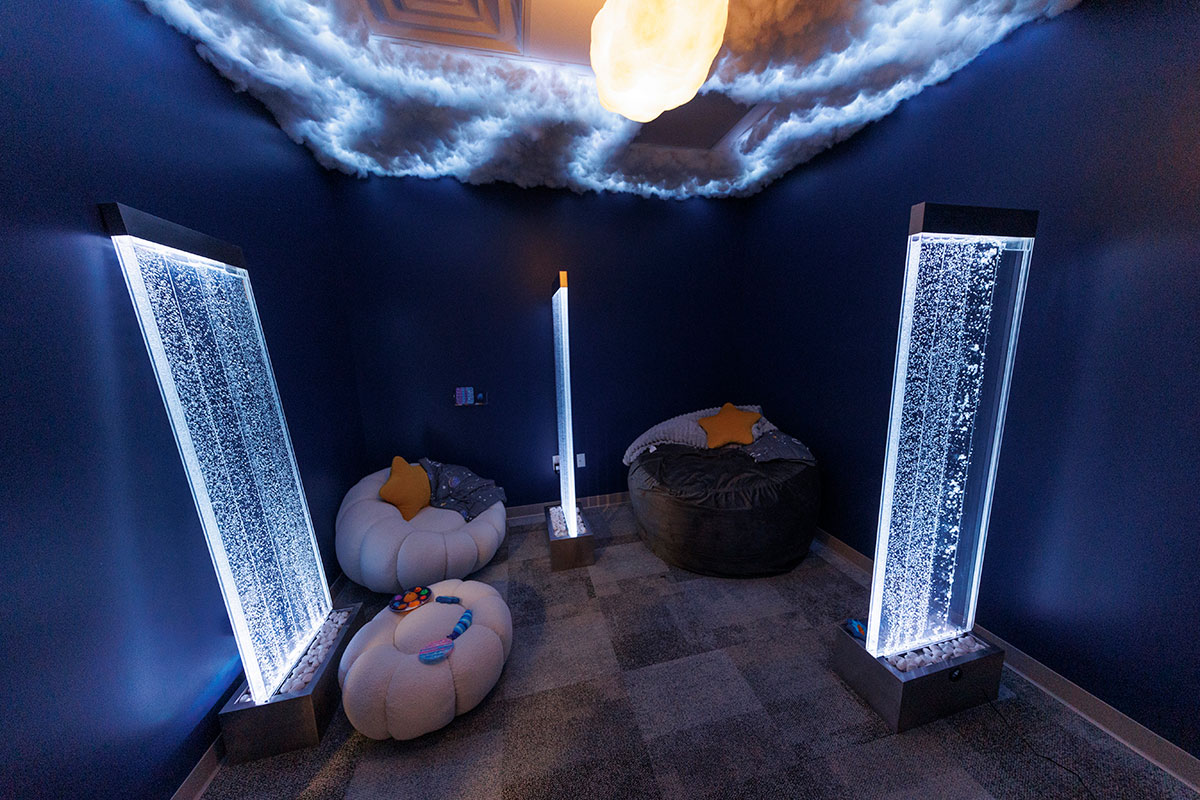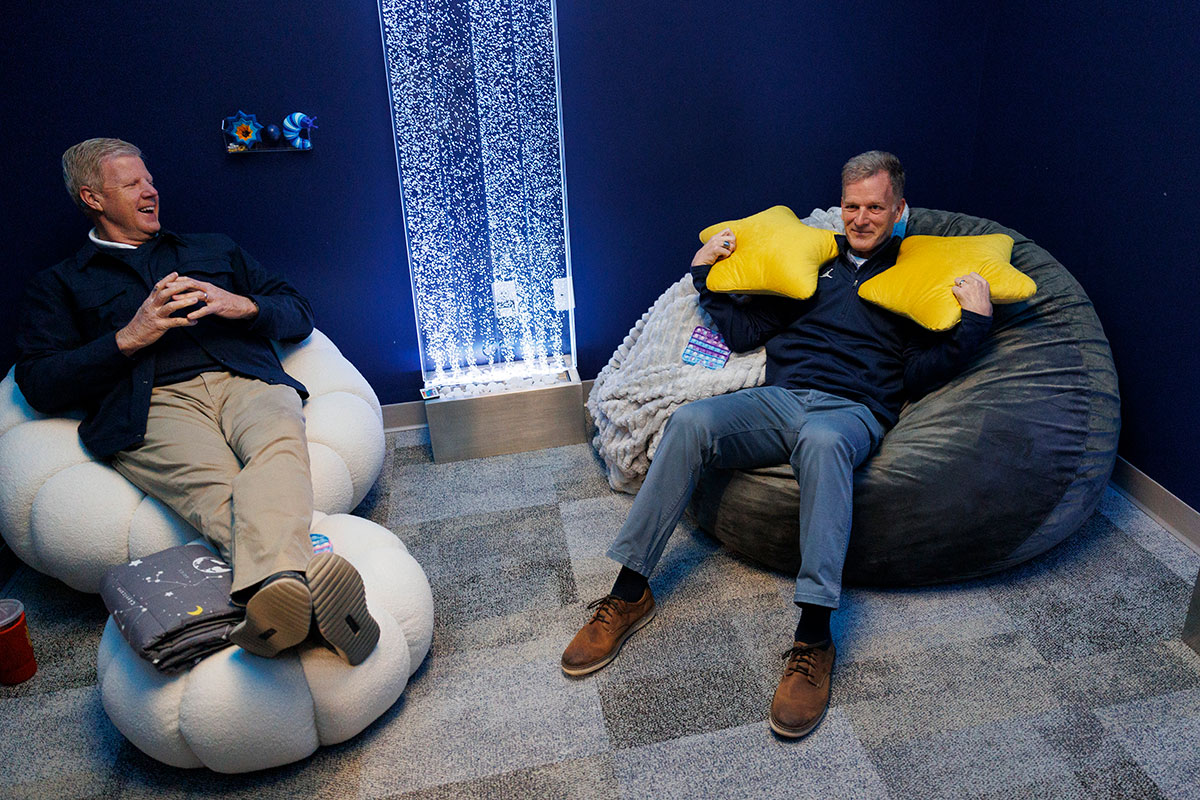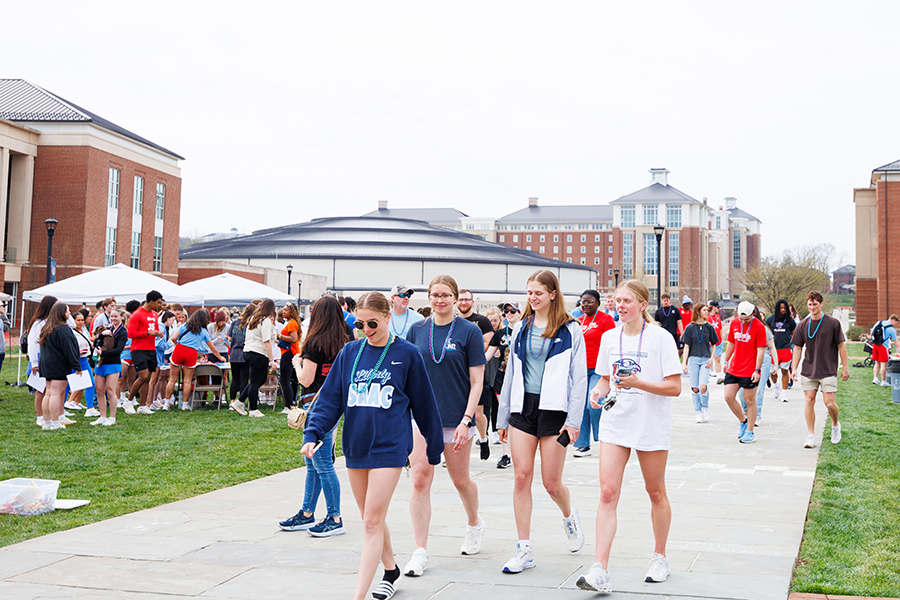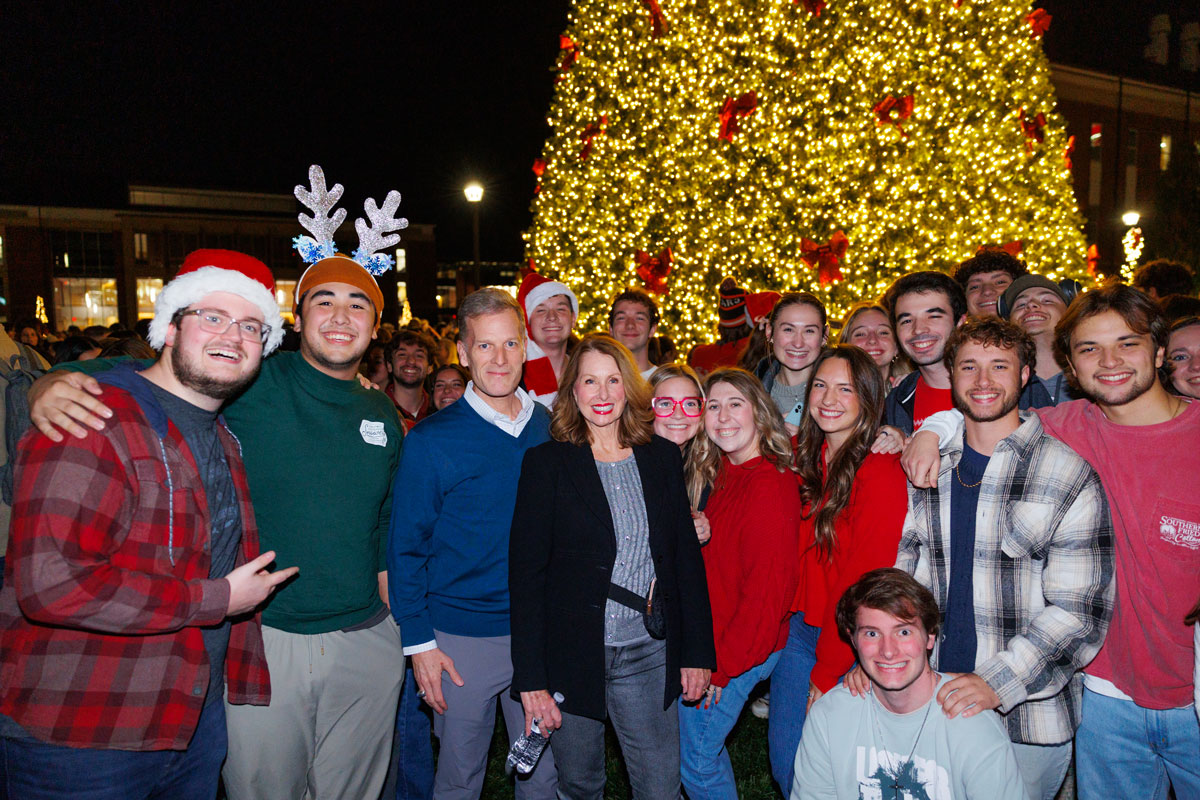Search News Archives
Filter News Articles
Additional Navigation
Liberty opens first ‘sensory room,’ made by students for students
February 5, 2025 : By Abigail Degnan - Office of Communications & Public Engagement

Students at Liberty University who struggle with sensory processing issues can face difficult barriers in day-to-day life on campus. To support them as they overcome these barriers, Liberty has opened its first sensory room in the Office of Disability Accommodation Support (ODAS) in DeMoss Hall, Room 1264.
The space is designed for students with documented disabilities who have ODAS accommodations and provides a calm and low-stimulation atmosphere for them to recoup from the stresses they face during the day. Students can sign up for 20-minute time slots.

Senior Executive Director of ODAS Dr. Ester Warren said the room can accommodate individuals with sensory sensitivity, autism, ADHD, anxiety, and more. The wheelchair-accessible space features a sunset theme with bubble wall dividers and a calming cloud ceiling that gently dims so visitors can enjoy the feeling of a sky turning from dusk to nightfall. Soothing storm sounds from a sound machine can be played in the background, and there are fidget toys, weighted blankets, and plush bean bags. The lighting and sound levels can be adjusted to the occupant’s desire.
“Our vision for the sensory room project was driven by our commitment to creating inclusive and accessible spaces for students with disabilities and certain medical conditions,” Warren said. “We really believe this space will help us to support students’ mental health, remove barriers to learning, and foster a campus culture that glorifies God by how we love and support one another.”
Warren said sensory stimulation issues are different for everyone, even those with the same diagnosis.
“It could be anything related to the senses like sight, sounds, smell, or touch that could overstimulate someone. Something like fluorescent lights in a room could be bothersome and cause some issues for some students, loud noises could also be problematic. It can be really overwhelming for students, and they can have a difficult time regulating that stimulation. A room like this is helpful for students who are overstimulated to come in and decompress.”
She said the room was designed by students for students. Last spring, the FACS 300 Interior Design III class was assigned to conceptualize a sensory room within a budget, and the student pair with the best design was selected. Students who have ODAS accommodations provided their input.
“There’s a saying in the disability community: nothing about us without us,” Warren said, “And we wanted to ensure that students with disabilities had a voice in this process.”
Interior design senior Mary Schmidt and recent graduate Abigail Stem (’24) created and presented their winning “sunset” sensory room.
Schmidt was inspired by the children’s sensory rooms at Thomas Road Baptist Church, and she and Stem worked to make their own smaller version for the students at Liberty.

“Kids look for controlled stimulation, and they like to have exciting things around, visually exciting things, lots of noise, bright lights, and all that,” Stem said. “Our room was a bit smaller and also geared toward adults, so we kind of took an opposite approach which is very calming with very full tones.”
In their design, Schmidt and Stem also considered their personal experiences and their loved ones who have sensory issues.
“As someone who has sensory issues and things like that, it was really easy for me to step into (this project) and view how it should be designed to accommodate for that,” Schmidt said. “We were keeping that in mind the entire time (asking), ‘What would people want? What would be too much? What aspects (do we need) from everything like the chairs to the fidget toys?’”
Stem, who graduated in December, has accepted a job in interior design with Drees Homes in Raleigh, N.C. She said a recruiter saw her work on the sensory room through a post on LinkedIn and having that project on her résumé made her a competitive candidate.
Abby Snow, senior psychology student and newsletter editor for the LU Autism Advocates (LUAA) club, visited the sensory room at the beginning of the semester.
“I had a leadership meeting for the LUAA club and was feeling extremely overwhelmed, as students were in the midst of making their way to classes, and it was starting to get crowded. I was then invited into the ODAS sensory room and gave it a try,” she said. “An overall benefit of being in this room is a clear and quiet mind. The ambiance allows individuals with disabilities to have a safe space to relax and decompress when overwhelmed or overstimulated. There is a limited number of spaces on campus for individuals with disabilities to unwind, so the sensory room will be a great change.”
While many universities have sensory rooms, Warren said she has not seen a sensory room to the level of Liberty’s that was also designed and built by students.
“We want our students to understand that every single person is created in the image of God who loves them just the way He created them,” she said. “We believe that this sensory room is a very practical way for us to model the biblical principles of love, inclusion, and acceptance for our students. My hope and prayer is for students with disabilities to feel welcomed and loved at Liberty University.”
ODAS is a division of LU One, which hosts several events each semester, including the Martin Luther King, Jr. Celebrate Unity event on Jan. 20, a poetry contest focusing on biblical unity with finalists reading their pieces at a poetry slam on Feb. 7, a Unify Korea event also on Feb. 7, fireside chats with civil rights activist Clarence Henderson and musician Stanley Brown, and more.
LU One and ODAS is also supporting the Night to Shine on Feb. 7, hosted by the Tim Tebow Foundation. Members of the LU Autism Advocates club are assisting with the event, which is an unforgettable prom night experience to celebrate people with special needs ages 14 and older.


